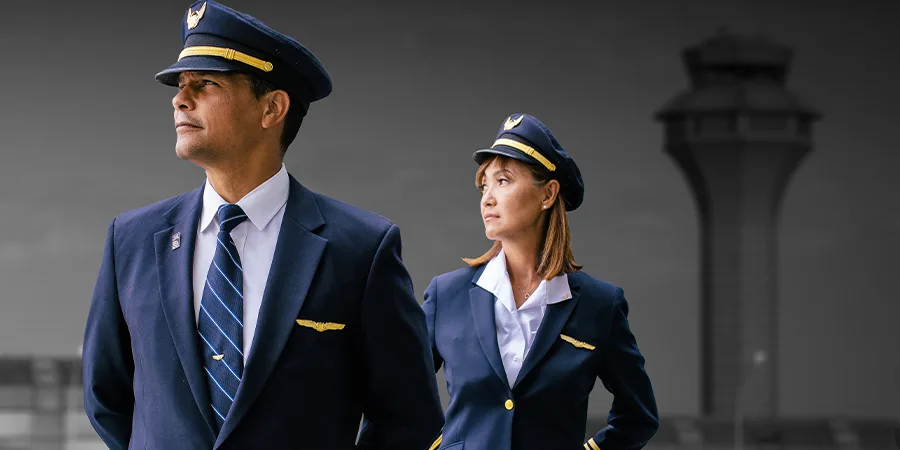
Despite progress, critical gaps remain in U.S. air safety more than two decades after 9/11
A tragic commercial airliner crash, a series of near misses in increasingly crowded skies and mounting concern over the nation’s outdated air traffic control system this year underscore a sobering reality: U.S. aviation safety, however strong, can never be taken for granted.
Through decades of collaboration with pilots, airlines, policymakers and industry partners, the United States has built the safest aviation system in the world. As the nation marks the 24th anniversary of the 9/11 terror attacks, it’s worth reflecting on how far we’ve come — while also confronting the critical gaps that remain.
From the installation of hardened flight deck doors in the aftermath of 9/11 to rigorous pilot training and qualification standards implemented in the wake of the 2009 Colgan Air crash, each new layer of protection has been the result of lessons learned from the past. Now, we have the opportunity — and the responsibility — to act before the next tragedy occurs.
The history of aviation safety in America is a story of rising to meet the moment. This moment demands no less. Today, there are three critical areas Congress, the FAA and the aviation industry must act on without delay.
Secondary flight deck barriers
The continued absence of secondary flight deck barriers compromises the safety and security of our skies. These lightweight, retractable gates are a proven, cost-effective way to prevent intruders from accessing the flight deck when the hardened door must be opened in flight — a far better option than leaving flight attendants to rely on beverage carts as the sole line of defense.
Congress mandated secondary barriers in 2018. After years of painstakingly slow progress, the FAA finally issued a rule in 2023 requiring these barriers to be installed on newly manufactured aircraft this year — only to grant airlines another delay. The new deadline, now set for July 2026, will come just weeks before the 25th anniversary of 9/11. This pattern of delays must stop and ALPA urges airlines to implement these life-saving barriers as quickly as possible — and long before next year’s deadline. The fact that we’re still debating whether to install basic flight deck protections more than two decades after the terror attacks is indefensible.
Air traffic control modernization
America’s air traffic control system is significantly outdated, relying on decades-old infrastructure and technology like paper flight strips, aging copper wiring and even floppy disks. These systems are costly to maintain, increasingly unreliable and increasingly likely to fail. Paired with a nationwide staffing shortage that stretches air traffic controllers thin, the result is a system operating with reduced margins for error. Pilots depend on our air traffic control partners to provide real-time flight path adjustments, weather updates and emergency coordination — especially as our skies grow more crowded.
Capacity-induced delays, staffing shortages and equipment failures are not just inconveniences — they are critical safety risks we cannot ignore. Now it’s up to Congress to fully fund modernization — going beyond the $12.5 billion included in the reconciliation bill that Transportation Secretary Sean Duffy has accurately called a “down payment.” Every passing day puts unnecessary pressure on a system designed for a previous era. The cost of inaction isn’t just inefficiency — it’s a potential recipe for disaster.
Congested airspace
From the deadly mid-air collision over Washington, D.C., earlier this year, to documented risks at airports near Las Vegas and Los Angeles, it’s clear the hazards of mixed air traffic in congested skies are not limited to a single city or region. With more than 15,000 occurrences near Washington National Airport between commercial airplanes and helicopters of less than 1 mile lateral separation and less than 400’ vertical separation in the span of just three years, the need for better oversight, clearer communication and smarter traffic management is an urgent national priority.
Enhanced coordination between the FAA and the Department of Defense, safety audits of high-risk airports and mandatory use of ADS-B by all civil and military aircraft— a real-time tracking technology specifically designed to prevent mid-air collisions — are commonsense, bipartisan solutions that can and should be implemented without delay.
The stakes could not be higher. While the United States remains the global leader in aviation safety, leadership requires more than resting on past achievements — it demands continuous vigilance, investment and action. Twenty-four years after the 9/11 attacks ushered in a new era of aviation security, our duty is unchanged: protect passengers, crews and the public by closing every known gap before tragedy strikes.
As pilots, that mission guides everything we do. We train for life, placing the safety and security of our passengers, our fellow crewmembers and the communities we fly over at the center of every decision. It’s a responsibility we take seriously — and one we proudly carry forward, every single day.